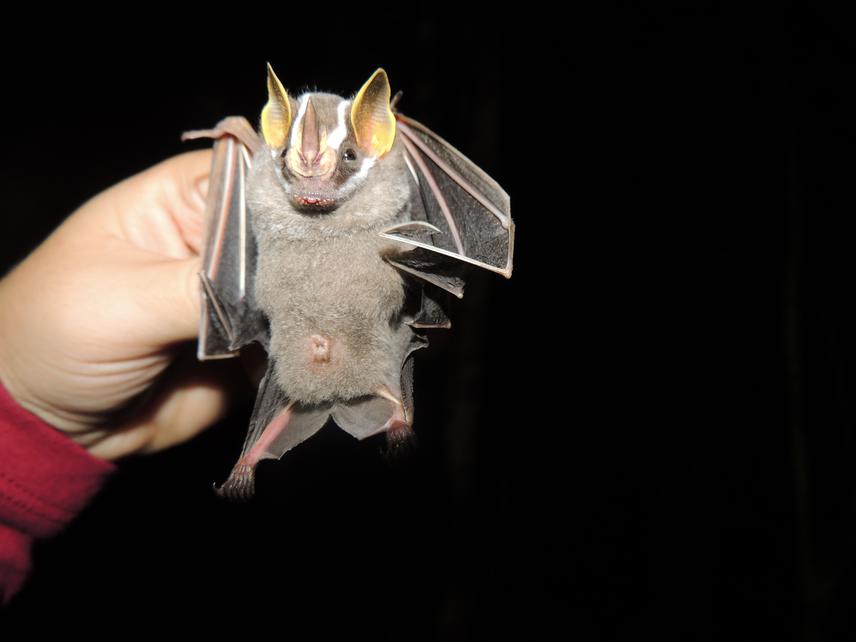Ana Carolina Moreira Martins
This project aims search for answers of phyllostomid bats to structure of fragmented landscapes and investigate how the local species composition influences the composition on a regional scale.
Bats present a wide diversity of ecological interactions, and due to their high mobility, are ideal to investigate the effects of landscape in structuring their communities. Studies have indicated that models of interactions between bats and the landscape show scale dependence of responses to landscape features. Multi-scale approaches are essential to interpret variations at community or guilds levels. The massive deforestation in Amazon has contributed to fast fragmentation process and habitat loss as the rich terra firme forest.

A fruit bat Artibeus gnomus.
This scenario is the Brazilian state of Mato Grosso, located in the arc of deforestation, with high rates of fragmentation. Whereas phyllostomid bats are major primary seed dispersers or pollinators of many plants in early succession, a significant reduction in their populations drastically affect forest regeneration and succession. Thus, looking for biota responses to anthropic changes in areas with high deforestation and fragmentation levels is of high relevance and urgency for biodiversity conservation.
The study area has only ~35% of native vegetation remaining, in a homogeneous landscape of pasture. The sampling design will have 81 sites, that follow the same protocol samples, using 10 mist nets (12 x 2.6 m) arranged along trails in the understory, open six hours per night. Field surveys will be conducted in four trips of 21 days, with two trips in the dry season (May 2013 to July 2013) and two trips in the rainy season (December 2013 to February 2014). Landscape variables will be quantified by metrics that have shown an effect on previous studies of bats in fragmented areas: percentage of coverage, mean size and mean density of patches, edge density, shape, mean nearest-neighbour distance, and proximity mean.
Metrics important in less fragmented areas will also be used: relative area of waterways and indices of landscape diversity. These metrics will be used to explain patterns of biotic variables: Shannon diversity index, total richness and abundance(for community), and abundance and richness of guilds (functional groups). A model selection by Akaike information criterion will be carried out for the landscape analysis. Furthermore, an additive diversity partitioning analysis will be performed to assess the contribution of local communities to the regional diversity.
The models this research will obtain can be used in conservation strategies that aim at enhancing land use configuration to sustain natural populations, and maintain the composition of local and regional communities, in accordance with the needs of society.